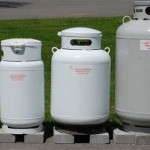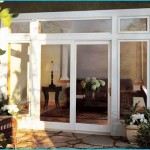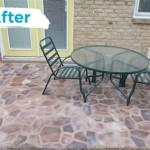```html
How to Replace a Glass Patio Table Top
Replacing a broken or damaged glass patio table top can revitalize outdoor furniture and enhance the aesthetics of a patio or deck. This process, while seemingly straightforward, requires careful planning, precise measurements, and adherence to safety protocols. A poorly executed replacement can lead to further damage to the table frame or, more importantly, cause serious injury. This article provides a detailed guide to replacing a glass patio table top, ensuring a safe and successful outcome.
Before initiating the replacement, it is crucial to understand the different types of glass suitable for patio tables. Tempered glass is the most common and recommended choice due to its enhanced strength and safety characteristics. Unlike standard glass, tempered glass shatters into small, relatively harmless pieces if broken, minimizing the risk of severe cuts. Other options include laminated glass, which consists of two or more layers of glass bonded together with a plastic interlayer, and acrylic or polycarbonate, which are plastic alternatives offering greater impact resistance but potentially less aesthetic appeal.
The subsequent sections will outline the essential steps involved in measuring for a replacement, selecting the appropriate glass type and thickness, safely removing the damaged glass, and installing the new glass top. Attention to detail throughout each stage is paramount for achieving a durable and visually appealing result.
Key Point 1: Measuring for a Replacement Glass Patio Table Top
Accurate measurements are the cornerstone of a successful glass patio table top replacement. Inaccurate dimensions can result in a glass top that doesn't fit properly, leading to instability or potential damage to the table frame. Several methods can be employed to obtain the necessary measurements, each with varying degrees of precision.
The simplest method involves measuring the existing glass top, provided it is still intact and retains its original shape. Using a measuring tape or ruler, measure the length and width (or diameter, if the table is round) of the glass. It is crucial to measure multiple points along each edge to account for any slight variations or irregularities. If the glass has a specific shape, such as an oval or rectangle with rounded corners, take measurements at the widest and longest points, as well as the radius of curvature for any rounded edges. Document all measurements meticulously.
If the original glass is severely damaged or missing, measuring the inside dimensions of the table frame is the next best option. Carefully measure the opening where the glass will sit, ensuring the tape measure is flush against the frame's inner edges. Again, measure at multiple points to account for any discrepancies. If the frame has retainer clips or supports, factor these into the measurements to ensure the new glass will sit properly and be securely held in place.
In situations where the table frame is complex or unusually shaped, creating a template can be highly beneficial. Place a large sheet of paper or cardboard over the table frame and trace the outline of the opening. Mark any important features, such as retainer clip locations or areas where the frame deviates from a perfectly straight line. The template can then be taken to a glass supplier for accurate cutting and shaping of the replacement glass.
Regardless of the measurement method employed, it is crucial to specify the desired edge finish. Common edge finishes include seamed edges (slightly smoothed to prevent cuts), ground edges (smooth and matte), polished edges (smooth and glossy), and beveled edges (angled for a decorative effect). The choice of edge finish depends on the table's design and personal preference.
Key Point 2: Selecting the Appropriate Glass Type and Thickness
Choosing the correct glass type and thickness is critical for ensuring the safety and durability of the replacement patio table top. The primary considerations are the size of the table, the intended use, and the potential for impact. As previously mentioned, tempered glass is the preferred choice for most patio tables due to its strength and safety characteristics.
The thickness of the glass should be determined based on the table's size and support structure. Generally, larger tables require thicker glass to prevent sagging or breakage under weight. For small to medium-sized tables (up to 36 inches in diameter or width), a glass thickness of 1/4 inch (6mm) may be sufficient. Medium to large tables (36 to 48 inches) typically require 3/8 inch (10mm) thick glass, while extra-large tables (over 48 inches) may necessitate 1/2 inch (12mm) or even thicker glass.
The presence of a solid support structure beneath the glass can influence the required thickness. If the table has a continuous frame or a grid of supports, the glass will be less prone to sagging and a slightly thinner option may be feasible. However, if the glass is only supported around the perimeter of the table, a thicker glass is essential to provide adequate strength and stability.
Consider the intended use of the table when selecting the glass type. If the table is likely to be subjected to heavy use or potential impacts, such as from children playing or objects being dropped, a thicker and more impact-resistant glass may be warranted. Laminated glass offers increased impact resistance compared to tempered glass, but it is generally more expensive. Acrylic or polycarbonate provides even greater impact resistance but may not be suitable for all aesthetic preferences.
Consulting with a glass professional is highly recommended to determine the optimal glass type and thickness for a specific patio table. Glass suppliers can assess the table's dimensions, support structure, and intended use to recommend the most appropriate and safest option. Obtaining professional advice can prevent costly mistakes and ensure the long-term durability of the replacement glass top.
Key Point 3: Safely Removing the Damaged Glass and Installing the New Glass Top
The removal of the damaged glass and the installation of the new glass top must be performed with utmost caution to prevent injuries. Always wear appropriate safety gear, including heavy-duty gloves, safety glasses, and long sleeves, to protect against cuts and abrasions. Work in a well-lit area and ensure the surrounding area is clear of obstacles.
Before attempting to remove the damaged glass, carefully assess the extent of the damage. If the glass is shattered into many small pieces, use heavy-duty tape to secure the fragments and prevent them from scattering. Apply the tape in a grid pattern, covering as much of the broken glass as possible. This will help to keep the pieces together and minimize the risk of cuts.
Carefully lift the taped glass from the table frame. If the glass is stuck or difficult to remove, use a putty knife or similar tool to gently pry it loose. Avoid applying excessive force, as this could cause further breakage. Dispose of the broken glass properly, wrapping it securely in heavy-duty paper or cardboard before placing it in a designated disposal container.
Before installing the new glass top, thoroughly clean the table frame to remove any debris, dirt, or remnants of the old glass. Inspect the frame for any damage or loose components and repair them as necessary. Ensure the frame is level and stable before proceeding with the installation.
Carefully lower the new glass top into the table frame. If the frame has retainer clips or supports, ensure the glass is properly aligned and secured. Avoid dropping the glass or applying excessive pressure, as this could cause it to crack or break. If necessary, use shims or spacers to ensure the glass sits level and is evenly supported.
Once the glass is in place, inspect it carefully to ensure it is properly seated and secure. Gently press down on the glass at various points to check for any movement or instability. If the glass is loose or wobbly, adjust the retainer clips or supports as needed. Clean the glass thoroughly with a glass cleaner to remove any fingerprints or smudges. Periodically inspect the glass for any signs of damage or wear and replace it if necessary.
By following these steps and prioritizing safety, replacing a glass patio table top can be a manageable DIY project that enhances the functionality and appearance of outdoor living spaces. Remember to always consult with a glass professional for any questions or concerns regarding glass type, thickness, or installation procedures.
```
Diy Replace Glass Tabletop With Tile Weekend Warrior Wednesday Your Modern Family

Patio Table Glass Replacement Ideas Genius

Makeover An Outdoor Table And Refresh Chairs Deeply Southern Home

Converting Our Broken Glass Patio Table Into A Beautiful Wooden

Upcycle Broken Glass Patio Table With Wood

Diy Replace Glass Tabletop With Tile Weekend Warrior Wednesday Your Modern Family

How To Repair A Shattered Glass Patio Table

Tempered Patio Glass Table Tops Replacement For

Makeover An Outdoor Table And Refresh Chairs Deeply Southern Home

How To Replace A Glass Tabletop With Rustic Wood Tray Painted Outdoor Furniture Pallet
Related Posts








